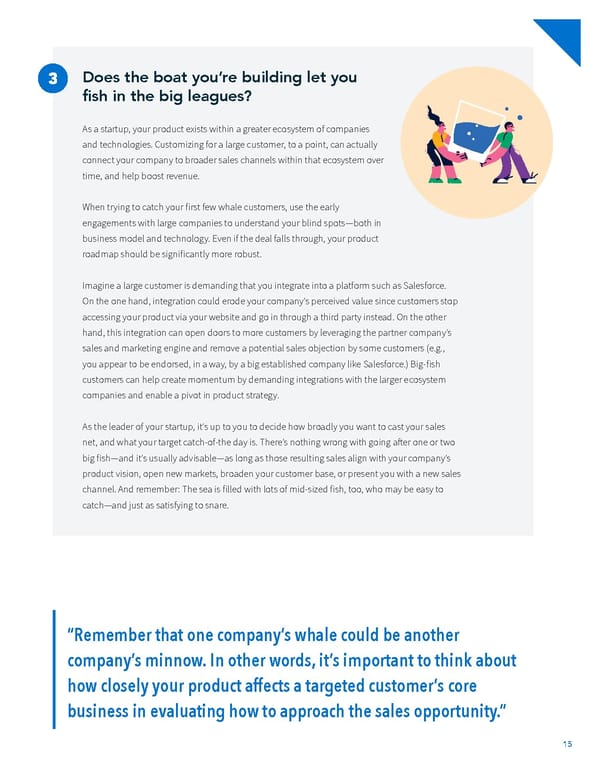Does the boat you’re building let you ifsh in the big leagues? As a startup, your product exists within a greater ecosystem of companies and technologies. Customizing for a large customer, to a point, can actually connect your company to broader sales channels within that ecosystem over time, and help boost revenue. When trying to catch your ifrst few whale customers, use the early engagements with large companies to understand your blind spots—both in business model and technology. Even if the deal falls through, your product roadmap should be signiifcantly more robust. Imagine a large customer is demanding that you integrate into a platform such as Salesforce. On the one hand, integration could erode your company’s perceived value since customers stop accessing your product via your website and go in through a third party instead. On the other hand, this integration can open doors to more customers by leveraging the partner company’s sales and marketing engine and remove a potential sales objection by some customers (e.g., you appear to be endorsed, in a way, by a big established company like Salesforce.) Big-ifsh customers can help create momentum by demanding integrations with the larger ecosystem companies and enable a pivot in product strategy. As the leader of your startup, it’s up to you to decide how broadly you want to cast your sales net, and what your target catch-of-the day is. There’s nothing wrong with going atfer one or two big ifsh—and it’s usually advisable—as long as those resulting sales align with your company’s product vision, open new markets, broaden your customer base, or present you with a new sales channel. And remember: The sea is iflled with lots of mid-sized ifsh, too, who may be easy to catch—and just as satisfying to snare. “Remember that one company’s whale could be another company’s minnow. In other words, it’s important to think about how closely your product affects a targeted customer’s core business in evaluating how to approach the sales opportunity.” 15
 Guide to Breaking into the Enterprise Market Page 14 Page 16
Guide to Breaking into the Enterprise Market Page 14 Page 16